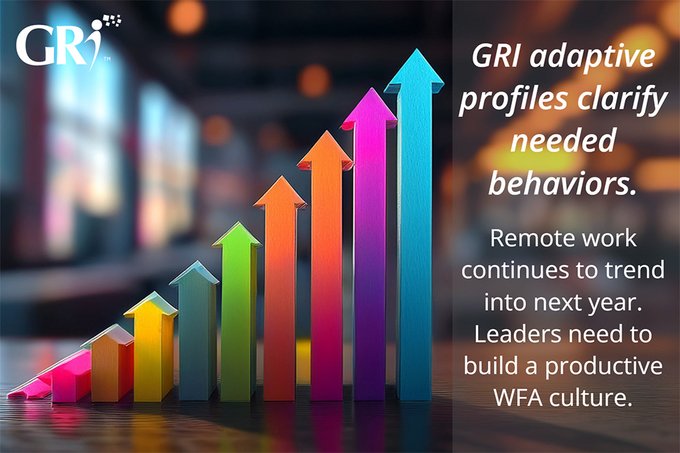Leadership 3.0: Objective Insights for People-Centric Leaders
Posted by Frederic Lucas-Conwell

Leadership 3.0: Objective Insights for People-Centric Leaders
Steve, a brilliant entrepreneur, poured his heart into his work. His team at "Innovatech" was on the brink of a major breakthrough, a new app that promised to revolutionize their industry. Yet, the atmosphere was thick with frustration. Some on the team were stifling creative input, dismissing Steve’s suggestions, and creating unnecessary friction among the members. Steve couldn’t get them to work together. One by one, key team members began to disengage. Morale plummeted, deadlines were missed, and Steve’s team, once a beacon of ingenuity, saw the interest in the project decline.
The product? It was eventually built, but only after a competitor launched a similar, superior product. Steve's lack of leadership cost Innovatech not just market share, but the hearts and minds of their most valuable people, and disengagement from Steve as well.
This isn't an isolated incident. Across industries, traditional leadership models are being challenged, leading to low morale, crippling turnover, and a deficit of innovation. What has gone wrong, and what can we do?
We certainly don’t lack leadership theories, but leaders do lack clear, unbiased information about the people they lead. We believe, and have seen firsthand, that performance can change if leaders have access to more objective data about people.
Leadership 1.0: The Machine Age Blueprint
Our concept of business leadership originated in the Industrial Age, when legions of unskilled workers needed to be managed. Imagine a factory floor in the late 19th century. Frederick W. Taylor's principles of scientific management dictated every movement. Success was measured in output, efficiency was achieved through strict hierarchies, and authority flowed top-down.
This "Leadership 1.0" was born of necessity in the industrial era: "we think smart, we tell, you deliver, we control." It was a necessary phase, but its authoritative style, while effective for repetitive tasks, proved asphyxiating for human growth, ingenuity, efficiency, and ultimately, productivity.
Research in psychology and organizations originating from that period started bringing new insights into how management could better operate. Think of the often cited Hawthorne experiment, which was conducted in the 1920s and 1930s on attention given to workers by leadership, and the impact of social and psychological factors on employee productivity and morale.
The Hawthorne experiment’s findings have long been challenged; many flaws were progressively revealed, but nevertheless, like other studies of the Fordian era, they helped to create more robust research frameworks and to shift the attention to people. These studies eventually planted the seeds for the human movement to grow in the 1950s and for positive psychology in the 1990s.
Leadership 2.0: The Rise of "Soft Skills" and Their Limits
By the 1980s, charismatic and transformational leadership had emerged, promising to inspire rather than merely direct. Leaders were chosen for their traits and their ability to motivate. Then came the "situational leadership" era of the 1990s to 2020: "all styles work as long as they fit the situation." This is about the same period when emotional intelligence and coaching emerged.
Carole, a mid-level manager in the late 90s, attended workshops on emotional intelligence and personality assessments. She learned to adapt her style, to "coach" her team, and to build "empathy." Yet, despite her best efforts, she often felt like she was guessing. Why did some performance review conversations land, while others fell flat? Why did some team-building exercises create lasting bonds, and others just awkward silence?
She was trying to manage people's "brains," but they also had "hearts and guts," with millions of neurons not always under conscious control. Neuroscience would later confirm what Carole instinctively felt: humans adapt, but constant, ill-fitting adaptation generates tension, negative emotions, and ultimately, quiet disengagement, rebellion, or resignation.
During that period, research in social science soared. As the illustration below suggests, the understanding of how human beings function dramatically evolved, hopping from one concept to another and using techniques that gained power over the years. But popular techniques, while well-intentioned, have often lacked the measurements needed to represent and understand what drives human behavior.

Leadership 3.0: Taking Leaders’ Social Skills to New Levels
Social skills are arguably the most critical for any leader. Leaders are remembered for what they do—or fail to do—with and for people. When companies perform, it’s a collective success. When they underperform, leaders are often singled out as the root cause. How people collectively perform is the leadership challenge.
David was known as a "people person," with a skill for spotting talent and intuitively resolving team disputes. His startup thrived on his gut feelings about people. But as his company scaled to hundreds of employees, he found his "private assessment techniques"—his intuition and personal methods for recruiting and managing—were no longer enough. Costly mis-hires mounted, and complex team conflicts festered beyond his capacity to intuitively resolve. His brilliance couldn't scale.
This story highlights a common challenge: a leader’s private, or internal, assessment techniques are invaluable, but they are inherently subjective and don't scale across an organization. They are sensitive to a leader’s "hiccups" and biases, and make it incredibly difficult to introduce objective rigor from the top.
At the heart of Leadership 3.0 is the realization that a leader’s social skills can be substantially enhanced by objective measurement that can be shared across the organization. Just as standardized processes and statistics have brought objectivity to other fields, tools can bring precision and refinement to understanding social behaviors.
The Missing Metric
For decades, various assessment techniques have been used, researched, and refined for use in large and small organizations in any industry. We’ve studied those techniques at GRI in regard to their use and impact on individual and organizational performance. Particularly, we have studied their use by managers, executives, and directors, in addition to human resources managers, recruiters, coaches, and clinicians.
By contrasting the use and effect of those techniques of performance, we have progressively built a clear understanding of their strengths and limitations. Three categories have emerged, which are summarized in the table below.
| Trait | Type | Factor | |
|---|---|---|---|
| Usage | Recruitment, and vocational guidance | Coaching and team building | Leadership, management, orga. dev. Other types and traits usages. |
| Characteristic | Measurements of traits. Long surveys. Statistics are generally available | Measurements of types. Short surveys. A few dimensions. | Measurement of factors. Short surveys. Applies to job demand as well. |
| Limitations | Traits overlap. Surveys take time to answer. Limited applications. | Types overlap. Lack of work-relatedness. Limited applications | More recent. Requires training |
| Users | Clinicians and recruiters | Coaches | Leaders and managers |
| Reveals | 1910s | 1920s | 2020s |
While trait-based tools have been used since the 1910s by clinicians and recruiters, the type-based tools have started being used for coaching and team building applications by companies and coaches only recently, since the 1990s.
The factor approach, with its roots in research dating back to the same era as Taylor, has progressively emerged since the 1950s. At GRI, we have extensively researched, refined, and deployed it with hundreds of leaders and organizations over the years.
This experience has convinced us that a more objective understanding of people’s social behavior fundamentally redefines how leaders lead, how organizations and their people perform, and ultimately takes leadership practice to a new level.
The factor-based approach uniquely serves managers and leaders for leadership, management, and organizational development. It offers a nuanced snapshot of individual behaviors, including preferred and required behaviors, the ease or difficulty of adaptation, and engagement. It also brings an understanding of the behaviors required in the job in order to perform.
As the factor approach serves managers’ and leaders' needs to grow their social skills, it also helps coaches and recruiters to work with them. In a similar way that type-based approaches have helped clinicians and recruiters with simpler measures for decades.
This component of personality, universal and relatively stable, can finally compete with a leader’s private techniques by bringing unparalleled precision and utility, providing the missing piece for social skills metrics that can scale across the entire organization, including with HR experts and advisors.
Deploying Leadership 3.0
The shift toward smarter, better-performing human organizations can only happen when leaders' growth mindsets are better equipped with “Genuine” rather than “Artificial” Intelligence. We believe that this intelligence can only be based on more objective, measurable information about how people perform.
Consider "Team Alpha," a high-potential startup known for its innovative product but plagued by persistent internal conflicts and employee turnover. Despite rigorous hiring processes and investing in the latest "team dynamics" workshops, their internal issues persisted. Their CEO, Maya, was at her wits' end. "We kept hitting a wall," she recounted. "We had brilliant individuals, but they couldn't collaborate effectively. Our subjective assessments just weren't cutting it."
Then, Maya was introduced to the "factor approach." By understanding each team member's unique adaptive profiles, Maya and her leadership team could finally see the patterns of their social challenges. They discovered where the real communication breakdowns were happening and how to better align roles with natural strengths. The result? Team Alpha transformed. Conflicts decreased, collaboration soared, and their retention rates dramatically improved. The factor approach gave them the objective understanding they needed.
Now and Into the Future: A Call to Action
Leadership 3.0 is not another leadership theory. It's a pragmatic framework for applying existing theories with a realistic understanding of how people perform. It embraces a more human-centered approach to work.
At the core of leadership 3.0 is a fundamental shift in mindset: leadership isn't just a list of skills; it originates from a leader's unique life experience, values, and potential to lead. It views team members as whole, creative, and capable individuals ready to grow.
The key to Leadership 3.0 is getting objective information on how everyone performs in their own unique way within the organizational context. If we cannot trust an instrument to provide this useful, objective information, we're left with subjective, private techniques that no leader can truly scale or refine.
This is the path forward for modern organizations to succeed. The future of leadership isn't about controlling people; it's about understanding them, empowering them, and building organizations where everyone can truly thrive.
Are you ready to lead with Leadership 3.0?
Latest Articles
Groupama Successful Transformation in Romania: The GRI, Catalyst for Profound Change
The history of Groupama in Romania is an eloquent testament to resilience, strategic vision, and the transformative impact of innovative management tools. Arriving at the...
Hybrid Work: A Management Revolution
The COVID-19 pandemic has acted as an unprecedented catalyst, radically transforming our approach to work. What was once a marginal practice has become the norm for many...



